Body Cavities and Membranes
1/18
There's no tags or description
Looks like no tags are added yet.
Name | Mastery | Learn | Test | Matching | Spaced |
|---|
No study sessions yet.
19 Terms
Dorsal cavity / Posterior aspect
contains the cranial cavity and the vertebral canal; brain and spinal cord
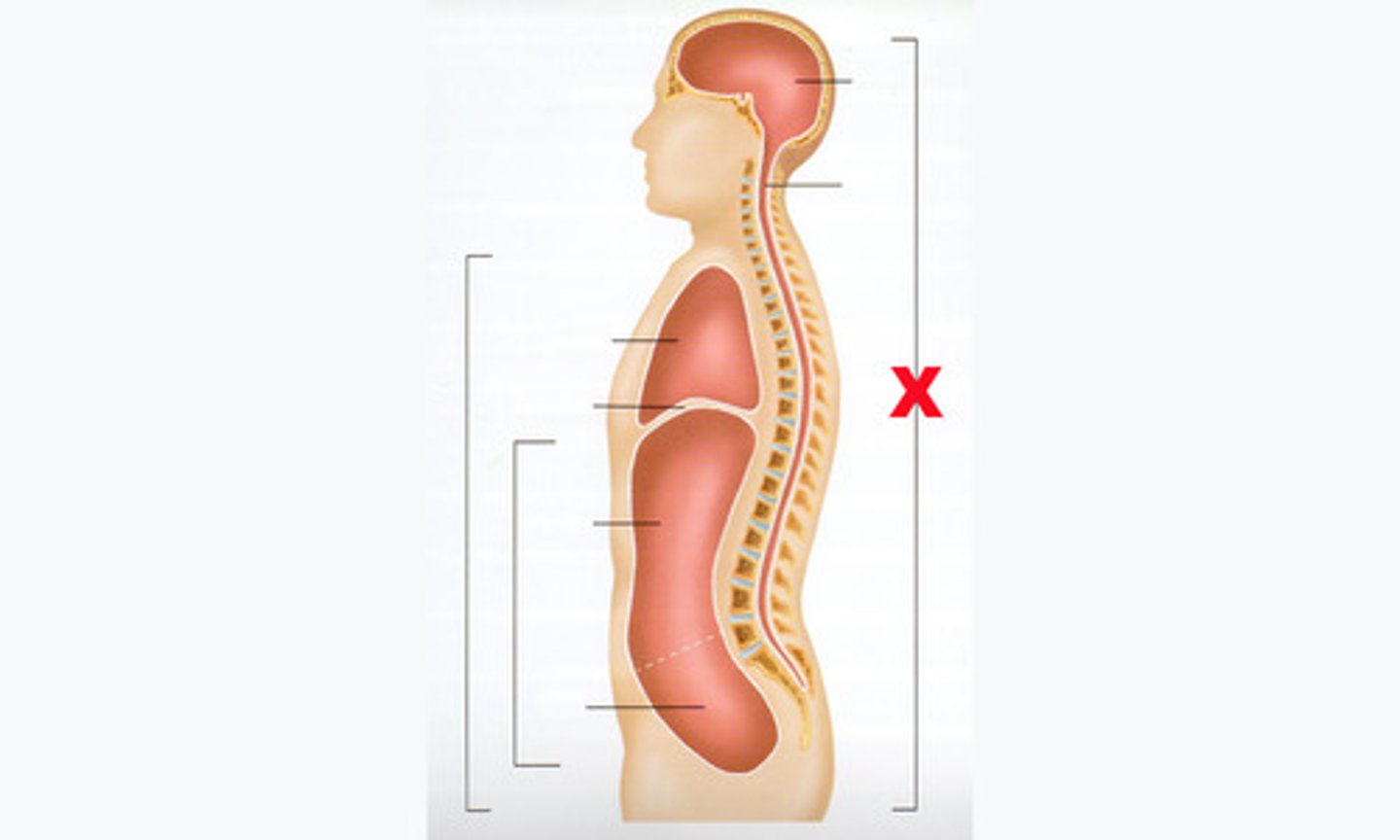
Cranial cavity
contains the brain
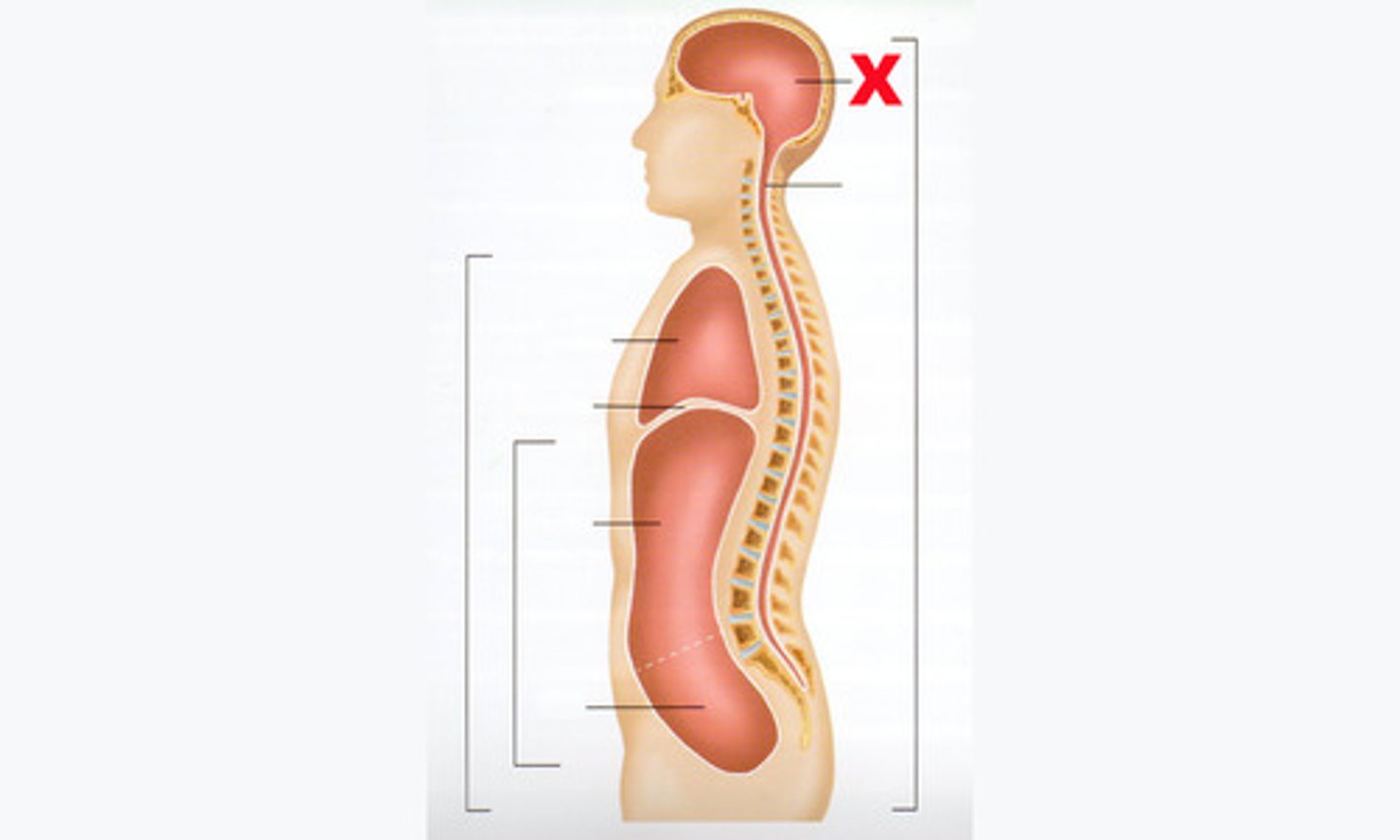
Vertebral canal
contains the spinal cord
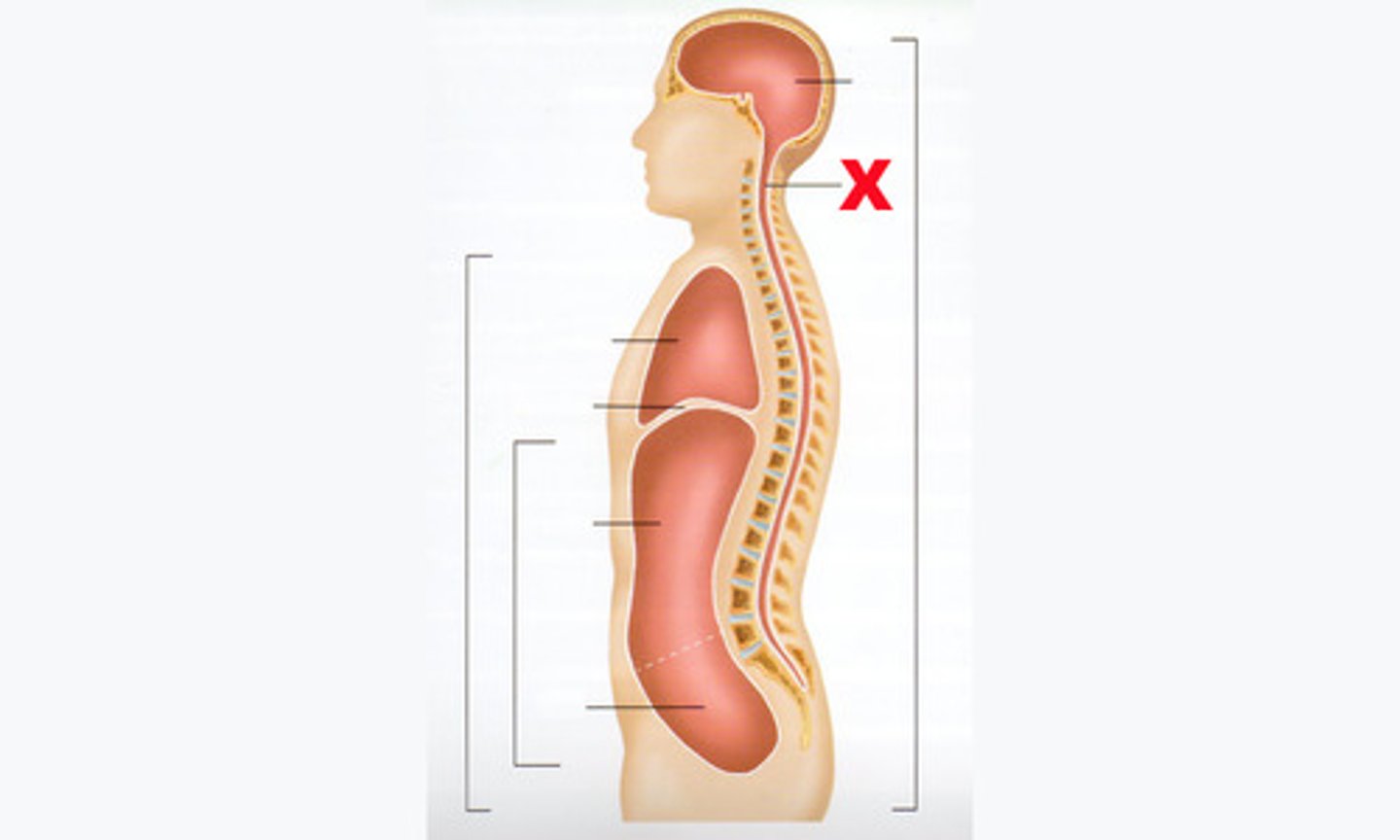
Ventral cavity
contains the thoracic cavity, the abdominopelvic cavity and diaphragm
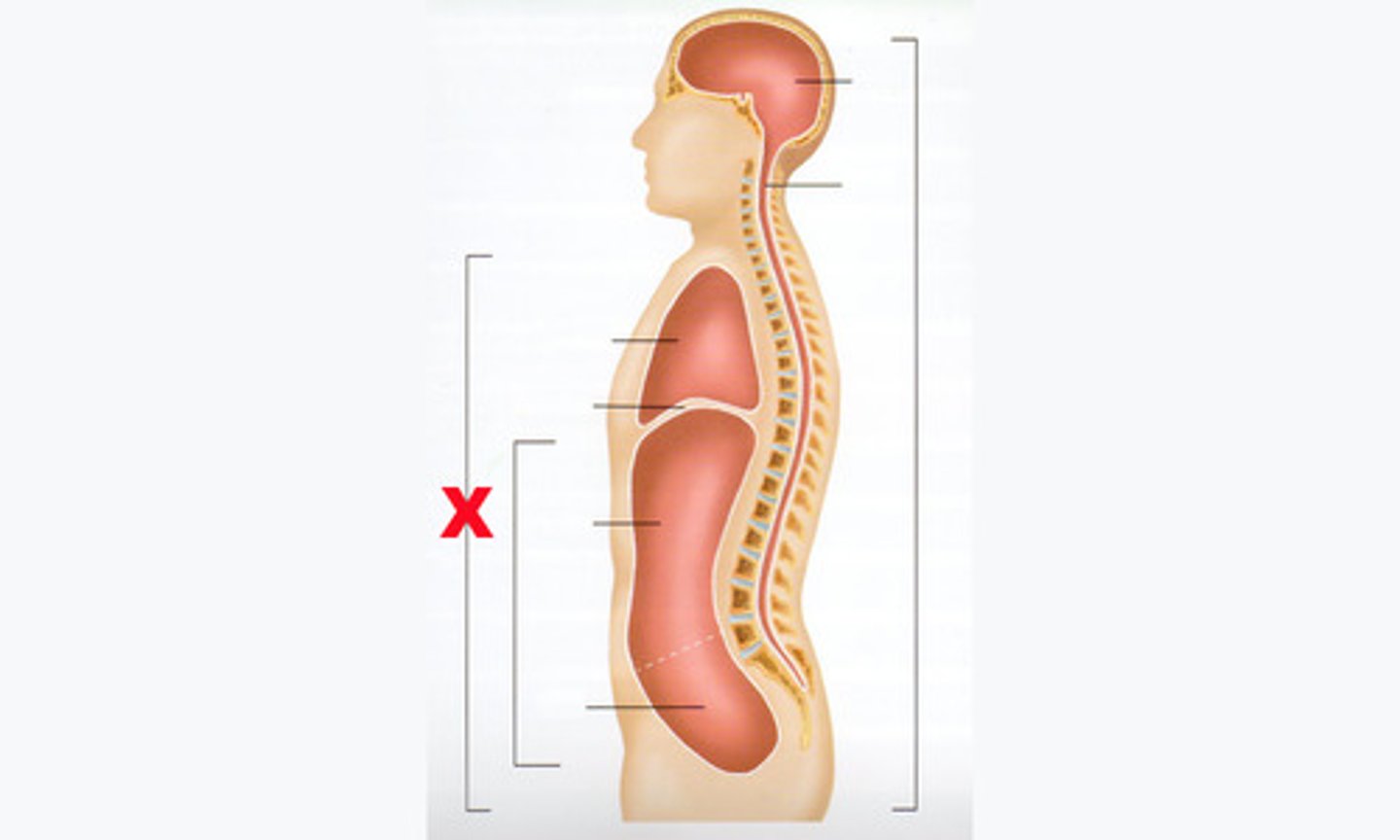
Thoracic cavity
contains two pleural cavities, the mediastinum cavity & the pericardium cavity
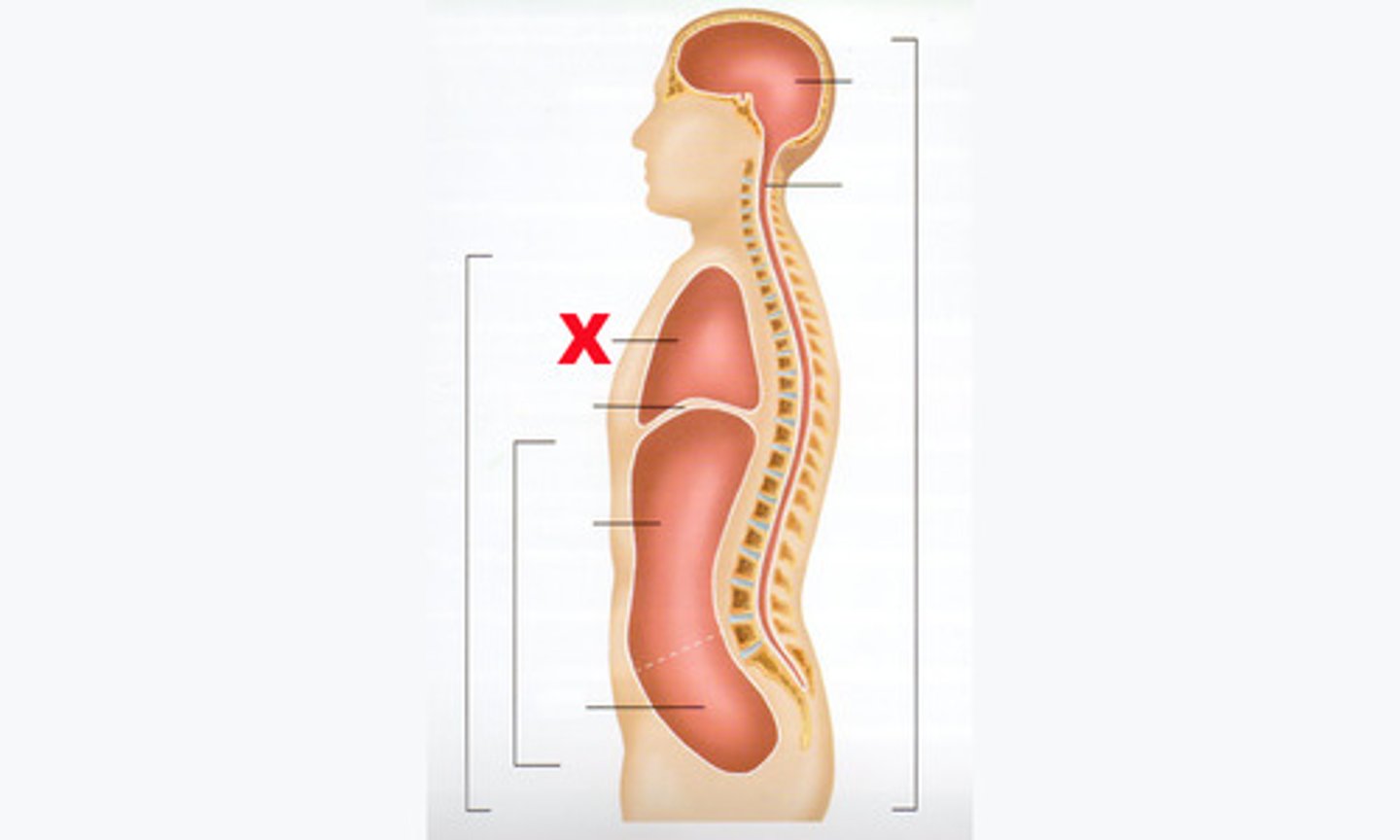
Mediastinum
central compartment of the thoracic cavity. It contains the heart, the great vessels of the heart, esophagus, trachea, phrenic nerve, cardiac nerve, thoracic duct, thymus, and lymph nodes of the central chest.

Pericardial cavity
a fluid-filled space that surrounds the heart

Pleural cavity
space between the pleural membranes and surrounding each lung
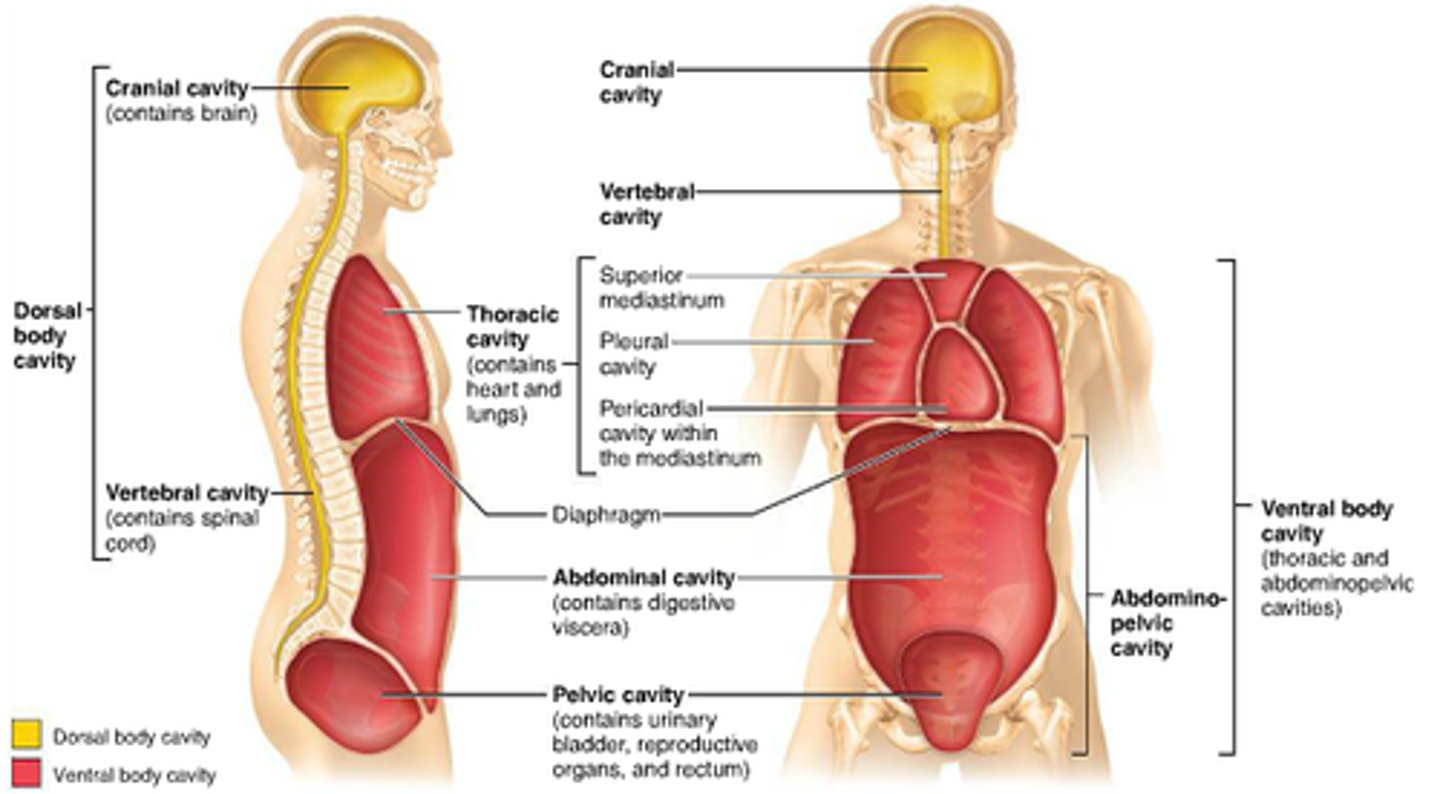
Diaphragm
a muscular partition separating the abdominal and thoracic cavities
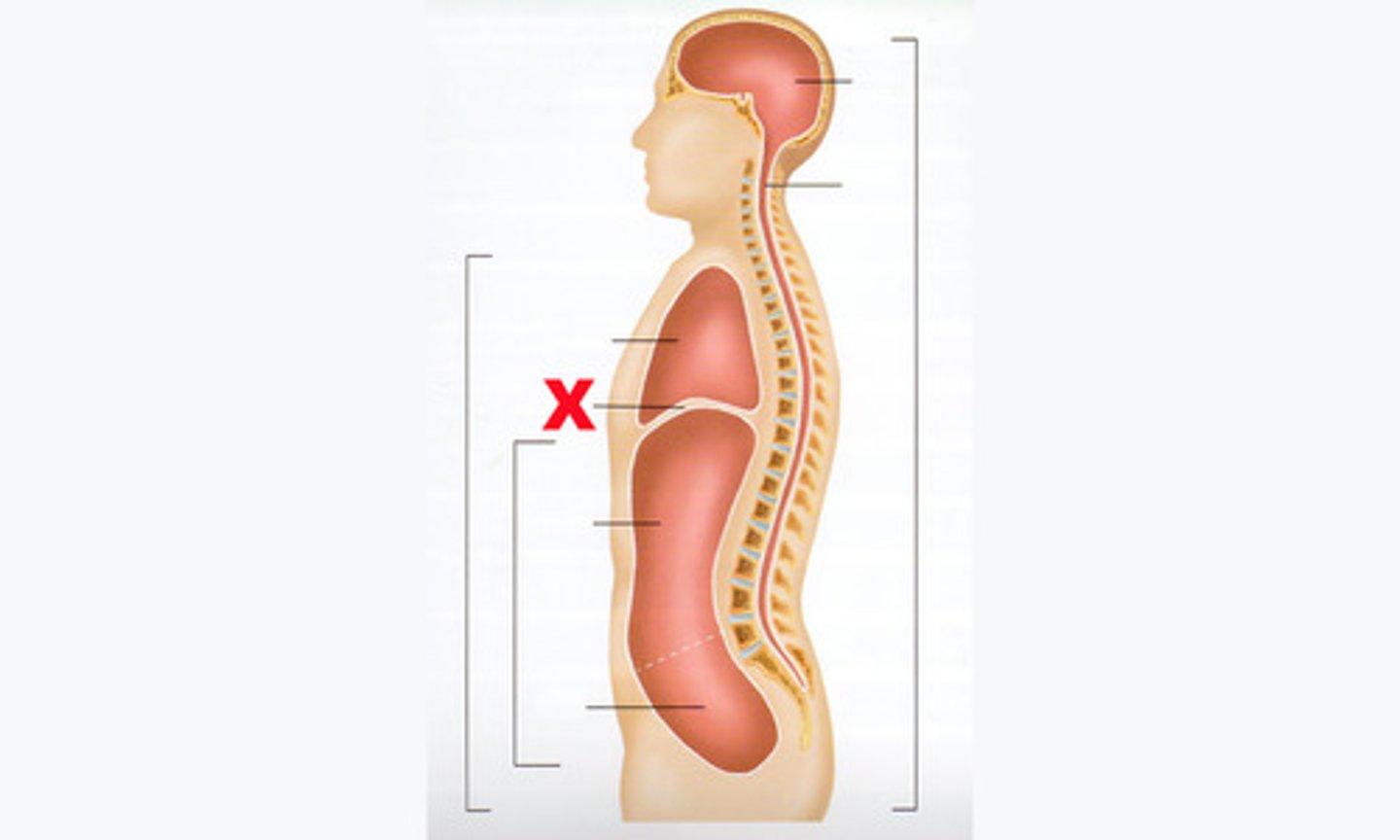
Abdominolpelvic cavity
contains the abdominal and pelvic cavities
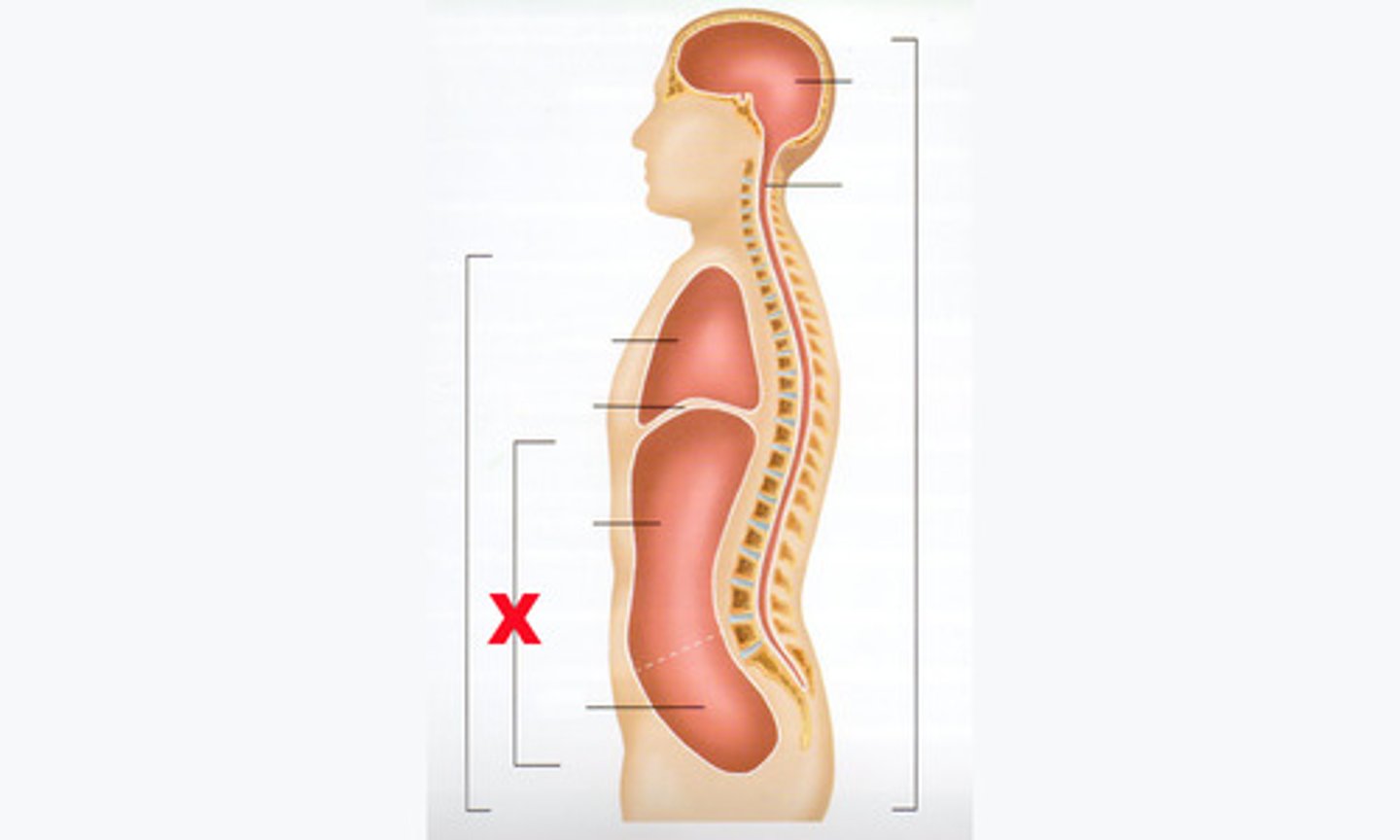
Abdominal cavity
contains stomach, kidney, liver, gallbladder, pancreas, spleen, small intestine, most of the large intestine, and appendix
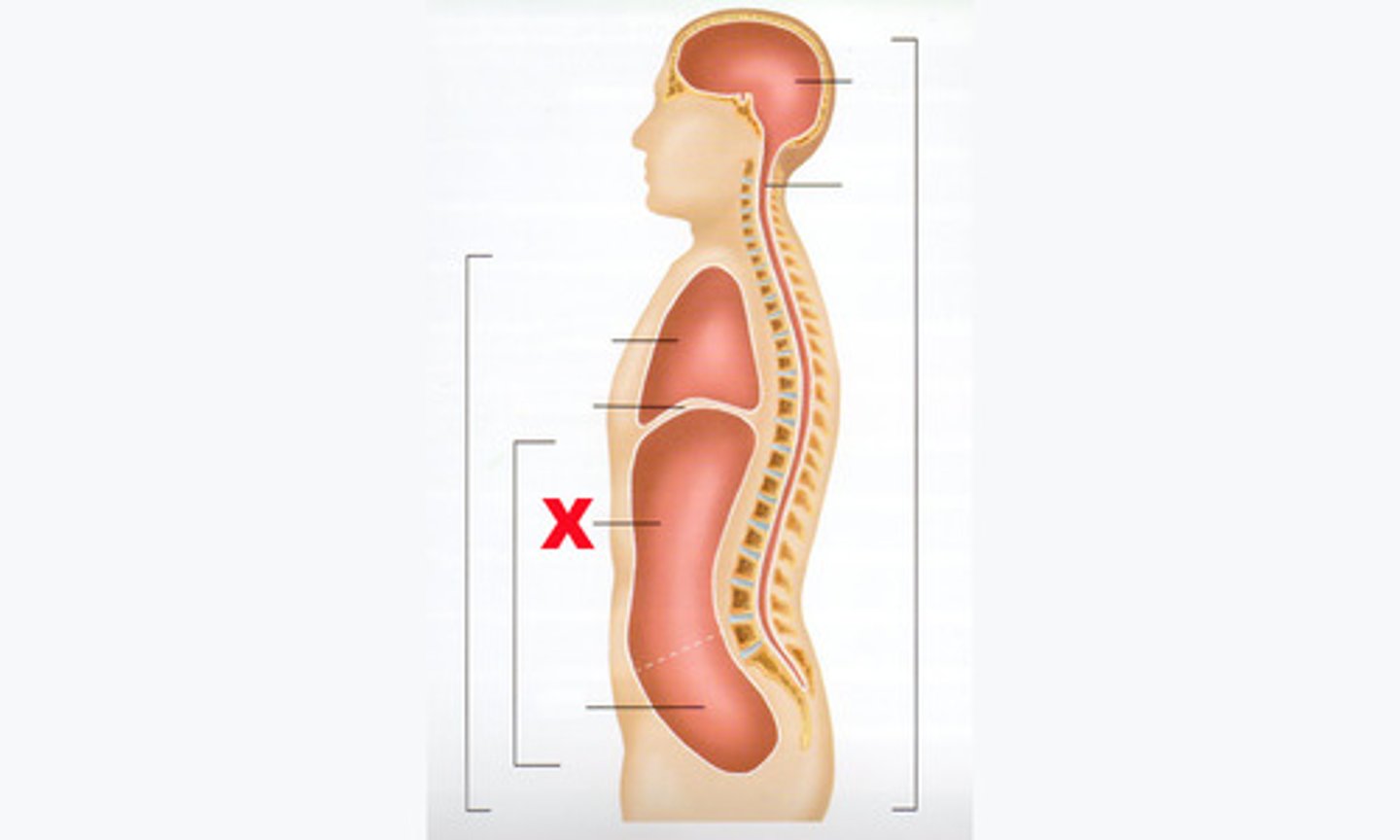
Pelvic cavity
contains urinary bladder, reproductive organs, and rectum
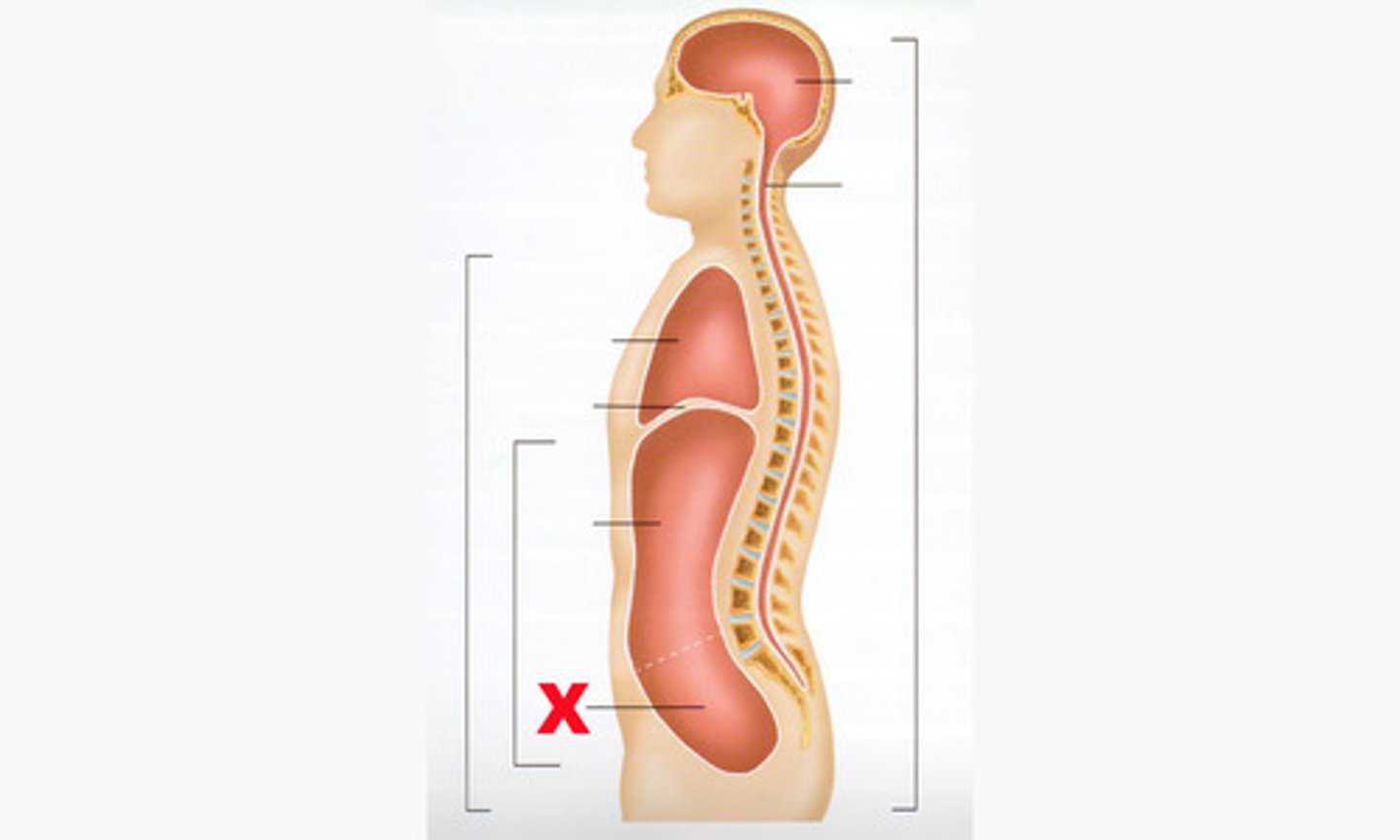
Serous membranes
Form thin layers around organs, secrete lubricating fluid into space between layers, reduce friction between organs
parietal pericardium
is the outermost layer and forms the sac around the heart.
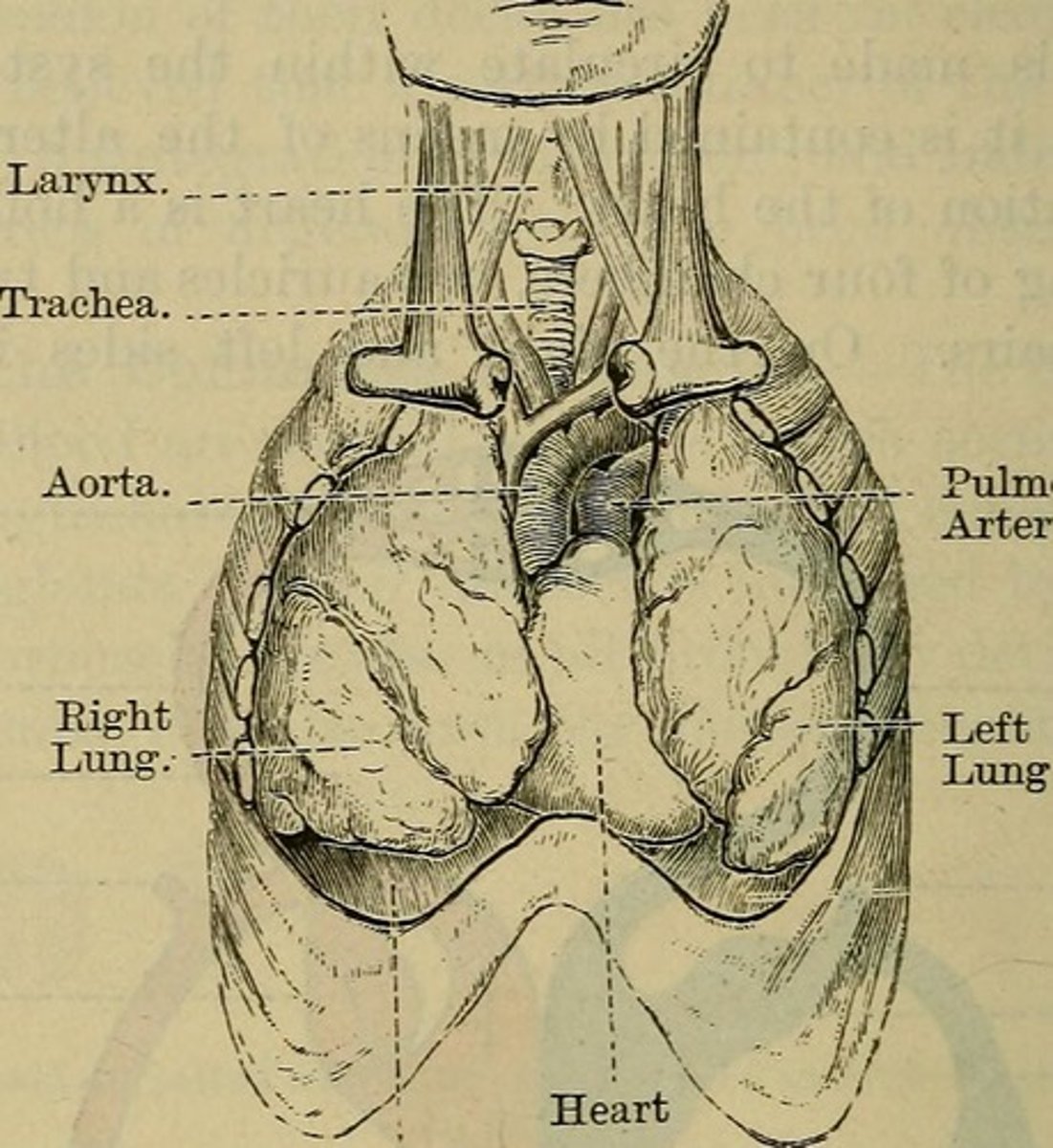
visceral pericardium
innermost layer of the serous membrane around the heart, forms the heart's external surface
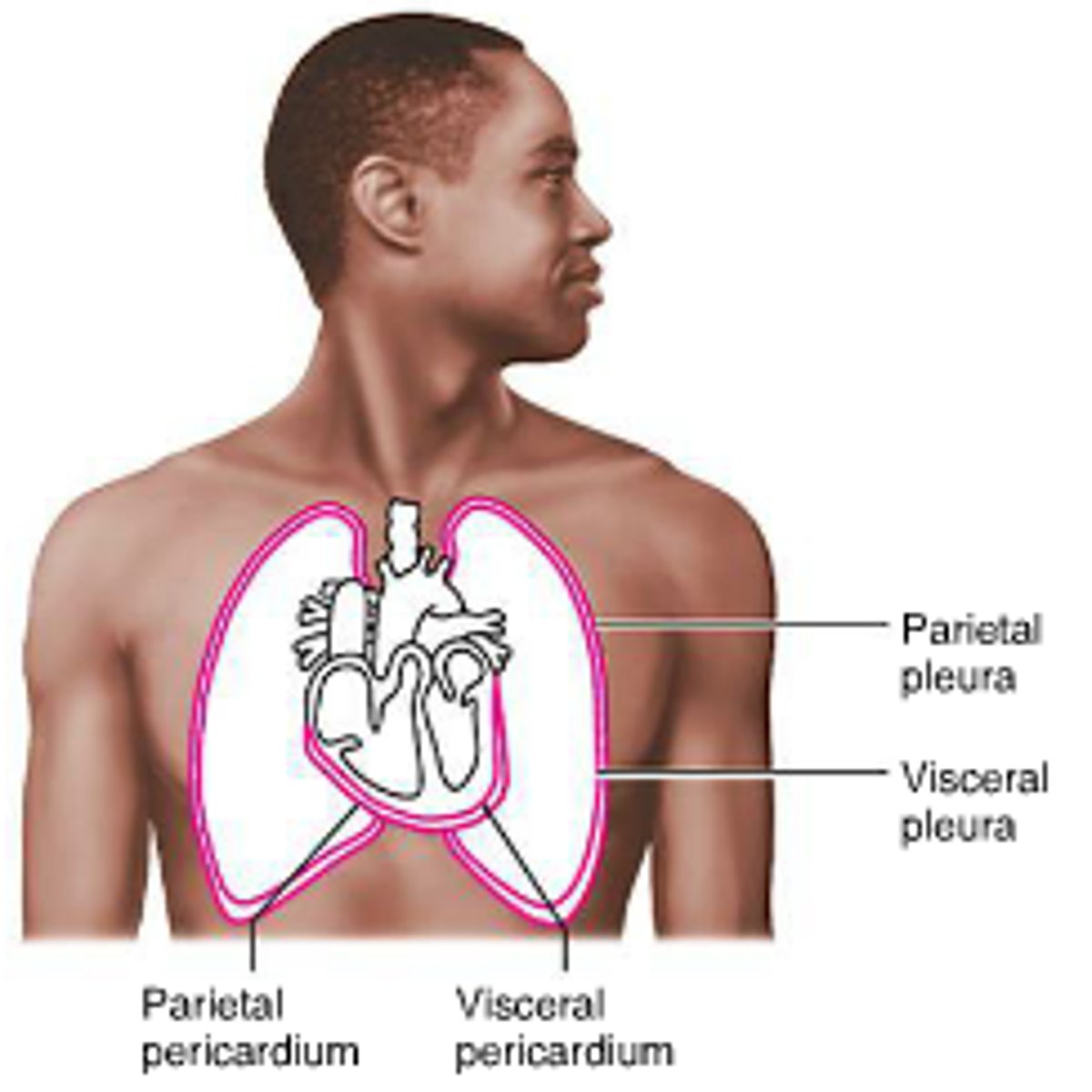
parietal pleura
Outer surface of the pleura, lines the internal surface of the thoracic wall
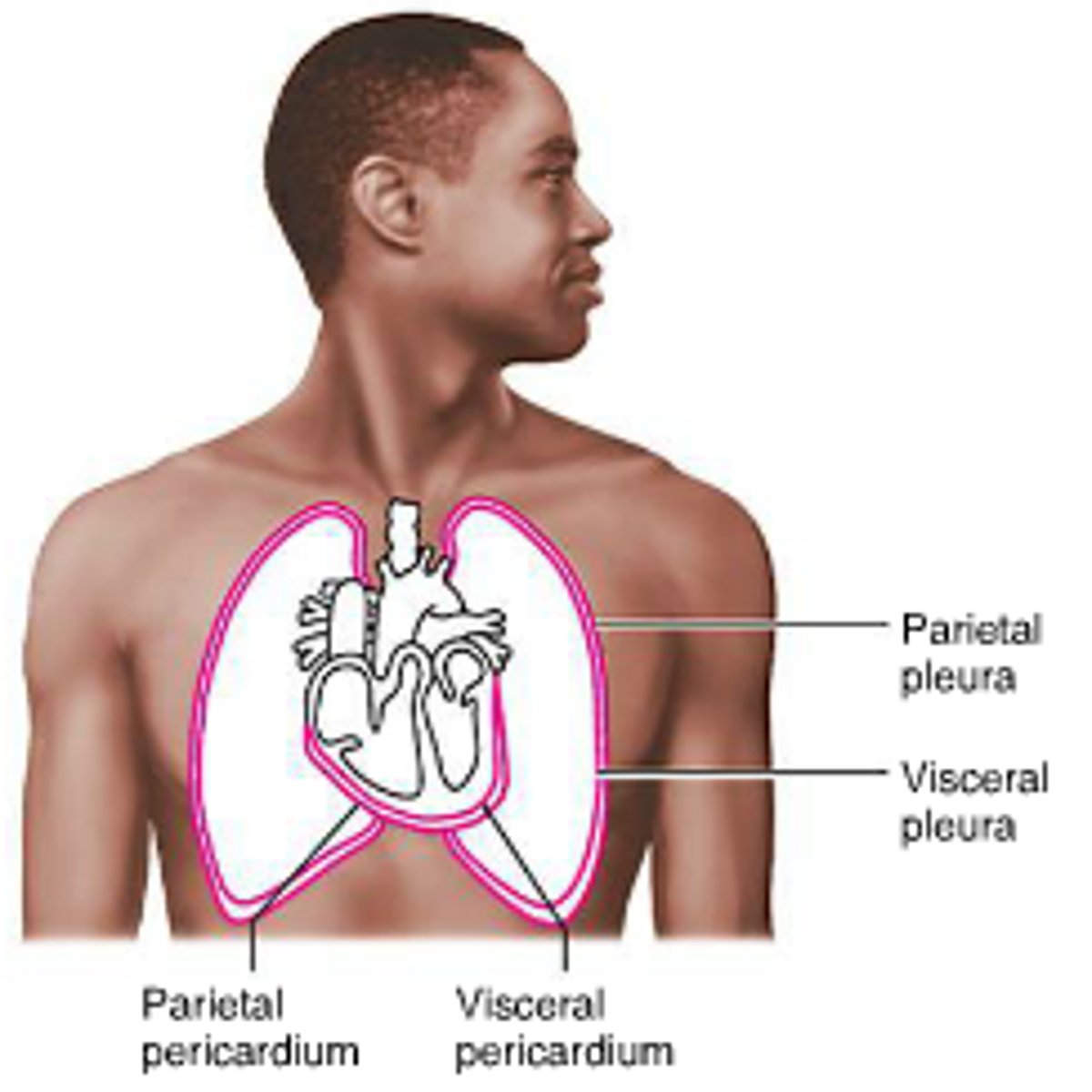
visceral pleura
covers the external surface of each lung
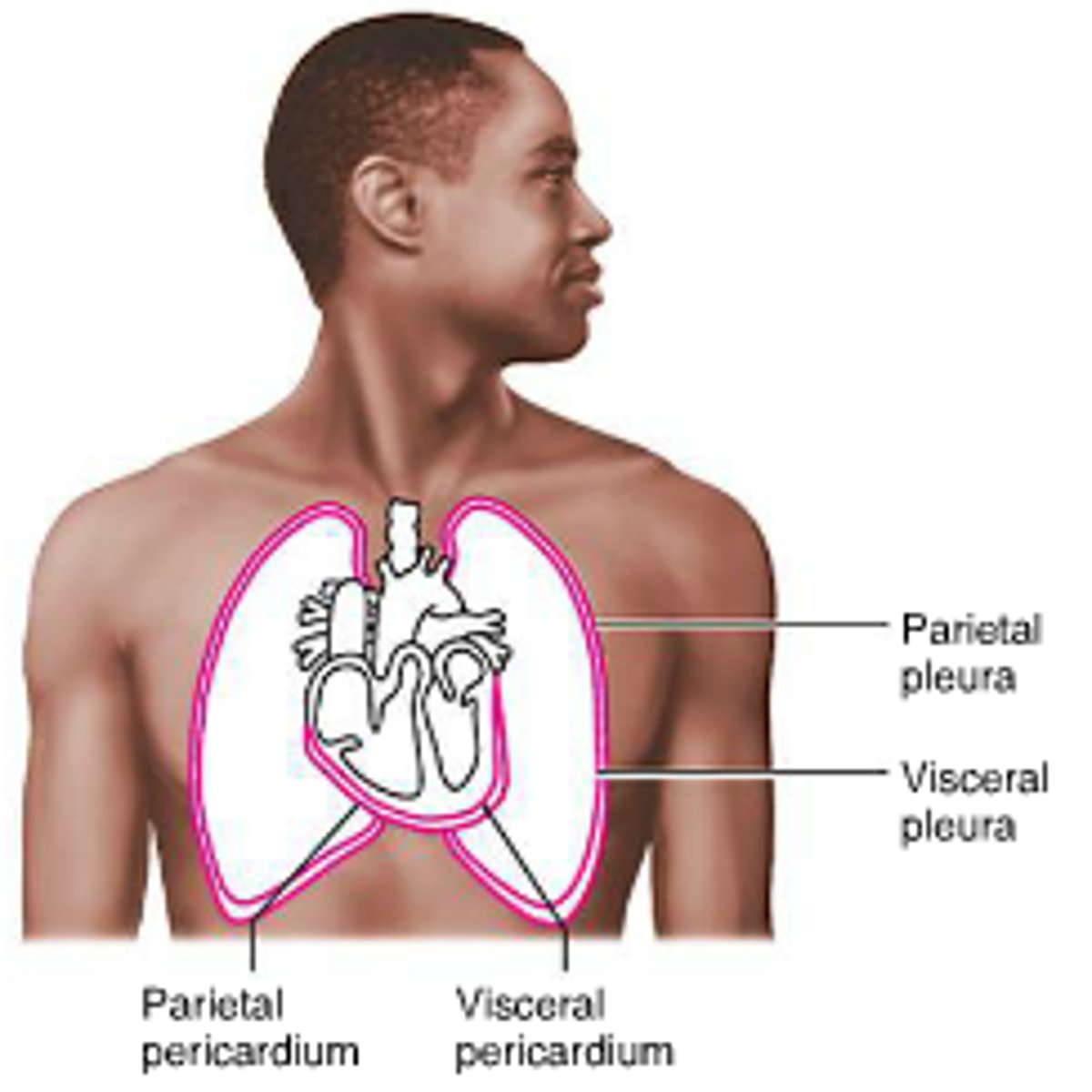
parietal peritoneum
the serous membrane lining the abdominal cavity

visceral peritoneum
the serous membrane that covers the organs of the abdominal cavity
